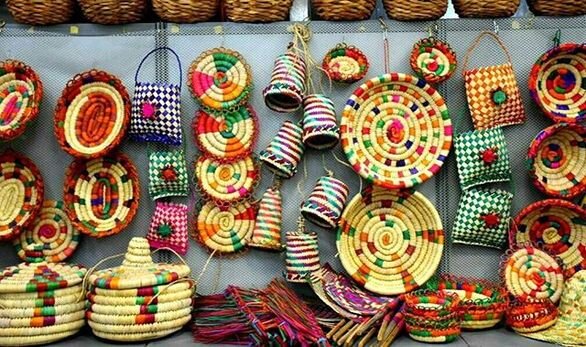Iranian handicrafts: mat weaving

Hasir Bafi, or mat weaving, is one of the oldest fields of handicrafts in the Iranian plateau. It is not known when and where this craft was first invented. But archeologists have discovered traces of mat weavings on plaster pieces that belong to six thousand years ago.
The oldest piece of Hasir in Iran belongs to the Shahdad region of Kerman province. Mat weaving, which is wearing thin reeds through cotton yarns, has not changed from ancient Egypt until today.
Depending on the geographical environment, the raw material of Hasir in different parts of Iran are: leaflets of Date trees, leaflets of Wild Date trees or Porak, female Wild Date or Daz, stems of reeds from tropical lagoons of Khuzestan, cold regions of Zarivar lake, Anzali lagoon, lands surrounding Hamun Lake, wheat stems from provinces of Zanjan, Azarbaijan, etc.
The tools of Hasir Bafi are very simple and limited including sickle, file, scissors, needle, and stitching awl. This art-craft is common in provinces of Sistan-Baluchestan, Khuzestan, Kurdistan, Hormozgan, Bushehr, Kerman, Yazd, Fars, Mazandaran, Gilan, and Tehran.
To weave a mat, first stems that match each other in size and diameter are picked and soaked in water. Then three to five of them are packed together by another stem. These bundles are weaved together to make objects such as baskets, bags, floor covers, wall hang, etc.
AFM

Leave a Comment